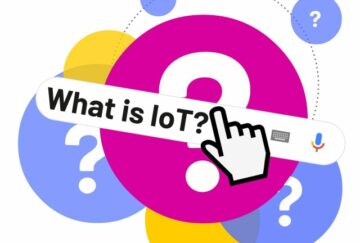Remote SIM Provisioning (RSP) stands as a transformative development in telecommunications, reshaping how devices connect to and interact with mobile networks. This technology builds upon the advancements of traditional SIM, eSIM and eUICC technologies, offering an innovative approach to managing mobile network subscriptions. RSP enables users and devices to connect to any network provider remotely, without the need for physical SIM exchanges, signifying a leap towards more agile, flexible and user-centric connectivity solutions. This article explores RSP’s origins, its core functionalities, and the significant impact it is set to have on the global telecommunications ecosystem.
Understanding RSP technology
RSP technology allows for the management and provisioning of SIM profiles over the air (OTA), eliminating the traditional dependency on physical SIM cards for network access. This advancement not only simplifies the connectivity process but also opens up new possibilities for device design and global mobile usage.
Design and application
RSP is designed to work seamlessly with eSIM and eUICC technologies, enabling a device embedded with an eSIM to download and activate SIM profiles remotely. This capability is crucial for devices ranging from smartphones and wearables to a vast array of IoT devices, facilitating effortless global network connectivity.
Enhanced flexibility and global reach
By allowing users to switch between network operators remotely, RSP technology significantly enhances flexibility for consumers, businesses, and IoT deployments. It supports the vision of a globally connected world, where devices can maintain optimal connectivity across borders without the logistical challenges of traditional SIM card management.
The impact of RSP technology
Streamlining device connectivity
RSP technology simplifies the process of connecting devices to mobile networks, eliminating the need for physical stores or carrier-specific SIM cards. This ease of connectivity is particularly beneficial for international travellers and devices that require seamless global roaming capabilities.
Enabling efficient IoT deployments
For the IoT ecosystem, RSP offers a streamlined approach to managing large-scale device deployments. It allows businesses to provision and manage connectivity for thousands of devices remotely, significantly reducing the complexity and costs associated with traditional SIM card provisioning.
Driving innovation in telecommunications
RSP technology is at the forefront of the next evolution in mobile connectivity, facilitating the development of new business models and services. It enables operators and service providers to offer more dynamic, customer-focused solutions, adapting to the changing needs of users and the growing demands of IoT connectivity.
In summary
- Characteristics:
- Enables the remote provisioning, updating, and management of SIM profiles without physical access to the device
- Allows users to switch between network providers remotely, enhancing user autonomy over service selection
- Supports global roaming and cross-border connectivity by enabling the easy switch of operator profiles to optimise service and costs
- Usageand features:
- Simplifies the setup process for smartphones and tablets, allowing users to select or change carriers without needing a physical SIM card
- Essential for smartwatches and fitness trackers, where space is at a premium and physical SIM card slots are impractical
- Streamlines connectivity management for IoT devices, enabling large-scale deployments with flexible network services
- Reduces logistical challenges associated with physical SIM cards, making it easier to deploy and manage connected devices at scale
- Offers consumers the convenience of changing subscription services without the need for physical SIM exchanges, improving service accessibility and satisfaction
- Facilitates easier expansion and operation of mobile services across different regions and networks, supporting a wide range of devices and applications
- Pros:
- Enables businesses and consumers to manage connectivity services more efficiently, with the ability to change network providers based on need or preference
- Reduces the physical manufacturing, shipping, and handling costs associated with traditional SIM cards, potentially lowering operational expenses for service providers and users
- Ideal for scaling IoT applications, supporting seamless global deployment and management of devices
- Cons
- Requires a robust and secure infrastructure for remote provisioning, presenting challenges in implementation and integration for service providers
- While RSP enhances flexibility, it must be fortified with advanced security measures to prevent unauthorised access and ensure the integrity of connectivity services
- The effectiveness of RSP is contingent upon widespread acceptance and support from network operators, which may vary by region and provider
We hope you have enjoyed our 8-part history of the evolution of SIM cards and it has helped provide the context for current wave of SIM-related innovations that are transforming IoT.
Comment on this article via Twitter: @IoTNow_
- SEO Powered Content & PR Distribution. Get Amplified Today.
- PlatoData.Network Vertical Generative Ai. Empower Yourself. Access Here.
- PlatoAiStream. Web3 Intelligence. Knowledge Amplified. Access Here.
- PlatoESG. Carbon, CleanTech, Energy, Environment, Solar, Waste Management. Access Here.
- PlatoHealth. Biotech and Clinical Trials Intelligence. Access Here.
- Source: https://www.iot-now.com/2024/02/28/142447-part-8-remote-sim-provisioning/
- :has
- :is
- :not
- :where
- $UP
- 5
- 6
- 8
- a
- ability
- acceptance
- access
- accessibility
- across
- activate
- adapting
- advanced
- advancement
- advancements
- agile
- AIR
- Allowing
- allows
- also
- an
- and
- any
- applications
- approach
- ARE
- Array
- article
- AS
- associated
- At
- Autonomy
- based
- BE
- beneficial
- between
- borders
- builds
- business
- business models
- businesses
- but
- by
- CAN
- capabilities
- capability
- card
- Cards
- carriers
- challenges
- change
- changing
- complexity
- Connect
- connected
- connected devices
- Connecting
- Connectivity
- Consumers
- context
- convenience
- Core
- Costs
- cross-border
- crucial
- Current
- demands
- Dependency
- deploy
- deployment
- deployments
- Design
- designed
- Development
- device
- Devices
- different
- download
- dynamic
- ease
- easier
- easy
- ecosystem
- effectiveness
- efficient
- efficiently
- effortless
- eliminating
- embedded
- enables
- enabling
- Enhances
- enhancing
- enjoyed
- ensure
- evolution
- Exchanges
- expansion
- expenses
- explores
- facilitating
- Features
- fitness
- Flexibility
- flexible
- For
- For Consumers
- forefront
- fortified
- from
- functionalities
- Global
- global network
- Globally
- Growing
- Handling
- Have
- helped
- history
- hope
- How
- HTTPS
- Impact
- implementation
- improving
- in
- Infrastructure
- Innovation
- innovations
- innovative
- integration
- integrity
- interact
- International
- iot
- iot devices
- IT
- ITS
- jpg
- large-scale
- Leap
- lowering
- maintain
- Making
- manage
- management
- managing
- manufacturing
- May..
- measures
- Mobile
- mobile networks
- models
- more
- must
- Need
- needing
- needs
- network
- Network Access
- networks
- New
- news
- next
- now
- of
- offer
- offering
- Offers
- on
- only
- opens
- operation
- operational
- operator
- operators
- optimal
- optimise
- or
- origins
- our
- over
- part
- particularly
- physical
- plato
- Plato Data Intelligence
- PlatoData
- possibilities
- potentially
- Premium
- presenting
- prevent
- process
- Profiles
- provide
- provider
- providers
- provision
- range
- ranging
- reducing
- region
- regions
- remote
- remotely
- Reports
- require
- reshaping
- robust
- scaling
- seamless
- seamlessly
- secure
- security
- security measures
- select
- service
- service providers
- Services
- set
- setup
- Shipping
- significant
- significantly
- signifying
- SIM
- SIM Card
- simplifies
- slots
- smartphones
- smartwatches
- Solutions
- Space
- stands
- stores
- streamlined
- subscription
- subscription services
- subscriptions
- support
- Supporting
- Supports
- Switch
- tablets
- Technical
- Technologies
- Technology
- telecommunications
- that
- The
- this
- thousands
- to
- towards
- Trackers
- traditional
- transformative
- transforming
- updating
- upon
- Usage
- User
- user-centric
- users
- vary
- Vast
- via
- vision
- Wave
- wearables
- which
- wide
- Wide range
- widespread
- with
- without
- Work
- world
- writer
- you
- zephyrnet













